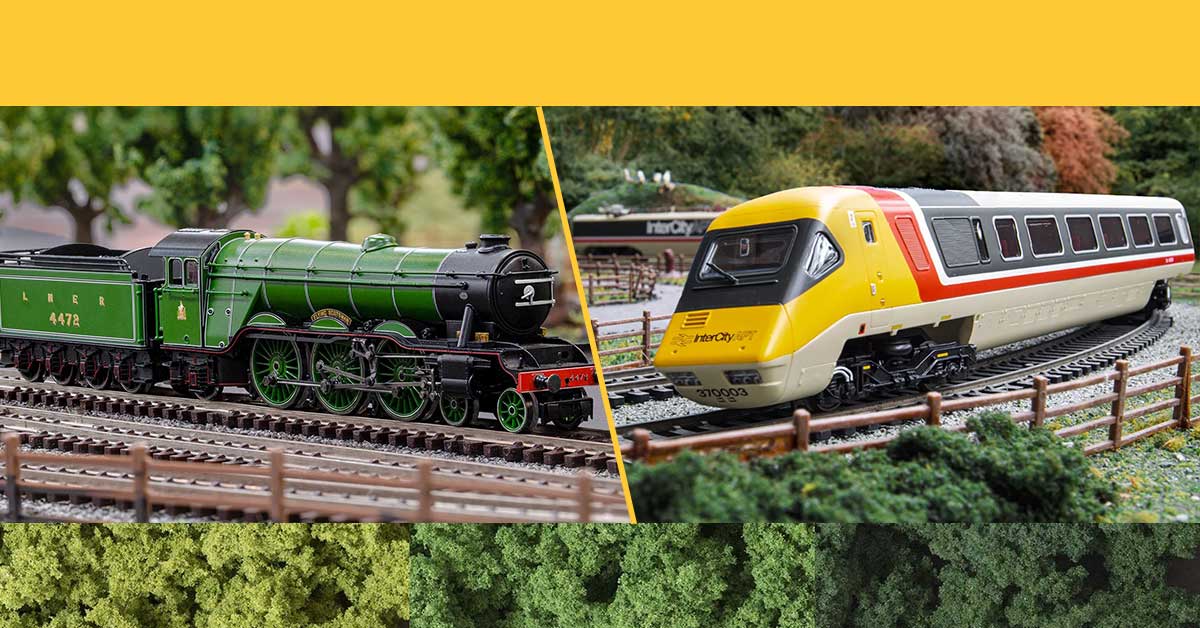Multi-Era Model Railway Layouts: A Simple Guide
Explore the evolution of rail transport through time on a single platform
Embark on a journey through railway history by creating a multi-era model railway layout. This ambitious project allows enthusiasts to showcase the evolution of rail transport, from the steam-powered giants of yesteryear to the sleek electric trains of today. At Hearns Hobbies, we provide the tools and expertise to help you bring this captivating concept to life. Whether you're a seasoned modeler or a newcomer to the hobby, this guide will walk you through the essential steps to create a diverse and visually stunning layout that spans multiple eras of railway history.
| Multi-Era Model Railway Layout: Key Considerations | |
|---|---|
| Scale Selection | Choose a scale that offers variety across eras (e.g., HO, OO, N) |
| Layout Planning | Design transitions between eras, accommodate varied rolling stock |
| Track Compatibility | Ensure track works for all locomotive types and eras |
| Scenery & Detailing | Create distinct areas representing different time periods |
Choosing the Right Scale for Your Multi-Era Layout
The foundation of any successful multi-era model railway layout lies in selecting the appropriate scale. This decision impacts not only the size of your models but also the variety of locomotives and rolling stock available across different eras. Popular scales like HO scale (1:87) and OO scale (1:76) offer a wide range of models spanning various historical periods, making them ideal choices for multi-era layouts.
For enthusiasts working with limited space, N scale (1:160) provides an excellent option, allowing for more extensive layouts in a compact area. This scale is particularly suitable for those looking to incorporate longer mainlines or more complex track arrangements within a smaller footprint.
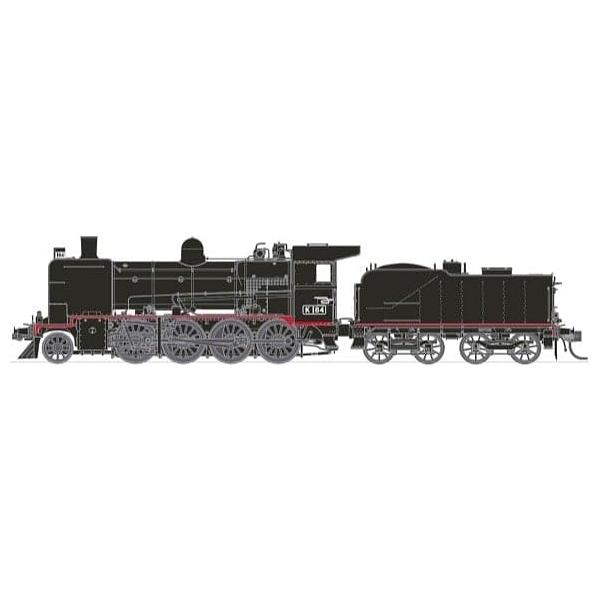
PHOENIX REPRODUCTIONS HO Victorian Railways K Class K184 Preserved 1970s
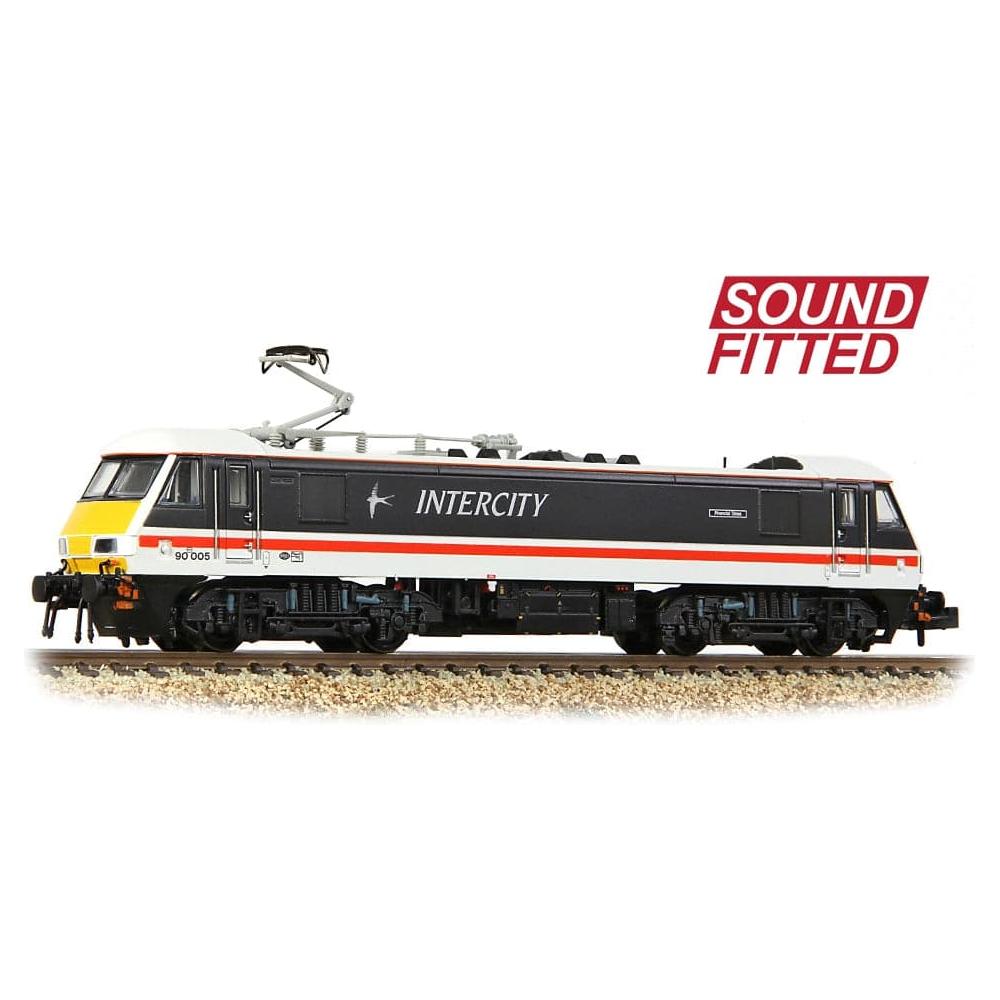
GRAHAM FARISH N Class 90/0 90005 'Financial Times' BR InterCity (Swallow)
When selecting your scale, consider the eras and geographical locations you wish to represent. For instance, if your layout focuses heavily on the steam era, ensure that the scale you choose offers a wide selection of steam locomotives and period-appropriate rolling stock. Similarly, for modern layouts featuring electric locomotives, verify the availability of contemporary models in your chosen scale.
Strategic Layout Planning for Multiple Eras
Planning a multi-era model railway layout requires careful consideration of track design, scenery transitions, and operational requirements. The key is to create a layout that seamlessly integrates different historical periods while maintaining a logical flow and operational interest. Start by sketching a track plan that allows for smooth transitions between eras, incorporating features like multiple loops, sidings, and yards to accommodate various types of rolling stock from different periods.
Consider dividing your layout into distinct "zones" representing different eras. This approach allows you to create mini-layouts within the larger scene, each with its own unique characteristics and operational focus. For example, you might have a steam-era industrial area transitioning into a more modern intermodal facility, connected by a common mainline that spans the entire layout.
Tip: Use tunnels, bridges, or scenic dividers to create natural transitions between different era zones on your layout. This approach helps maintain the illusion of separate time periods while allowing for continuous operation across the entire layout.
Building a Robust Baseboard for Your Multi-Era Layout
The foundation of any great model railway layout is a sturdy, well-constructed baseboard. For a multi-era layout, which may include heavier steam locomotives alongside lighter modern rolling stock, it's crucial to build a baseboard that can support varying weights and withstand the test of time. Begin with a strong wooden frame, using quality lumber and reinforcing cross-members to prevent warping.
Consider adding a layer of insulation foam on top of the wooden base. This not only provides a smooth surface for track laying but also allows for easy landscaping and the creation of varied terrain features. The foam can be easily carved and shaped to create hills, valleys, and other topographical features that add depth and interest to your layout.
Pro Tip: Baseboard Construction
For larger multi-era layouts, consider building your baseboard in modular sections. This approach offers several advantages:
- Easier transportation and storage
- Flexibility to rearrange or expand your layout in the future
- Ability to work on different sections separately
- Simplified maintenance and repairs
Mastering Track Laying for Multi-Era Compatibility
Track laying is a critical step in creating a smooth-running multi-era railway layout. The challenge lies in accommodating the different requirements of locomotives and rolling stock from various periods. Begin by laying the mainline tracks, ensuring they are level and perfectly aligned. For multi-era layouts, it's essential to use flexible track that can handle tight curves and gradients, especially for older steam locomotives which typically require broader curves.
When selecting track, consider using Peco track, known for its flexibility and reliability across different eras. Pay close attention to the following aspects:
- Curve Radii: Use broader curves where possible to accommodate larger steam locomotives.
- Track Gauge: Ensure consistency across your layout to prevent derailments.
- Turnouts: Choose turnouts that can handle both older and modern rolling stock.
- Grade: Keep gradients gentle to allow for smooth operation of all locomotive types.
Incorporate track accessories such as power feeds, switch motors, and track joiners to enhance operational reliability. Test your track thoroughly with locomotives from each era to ensure smooth operation across the entire layout.
Creating Authentic Scenery for Different Eras
Scenery is what brings your multi-era model railway layout to life, allowing you to visually represent the passage of time and the evolution of rail transport. The key to successful multi-era scenery is attention to detail and historical accuracy. Use scenery and landscape products to create distinct environments that represent different time periods.
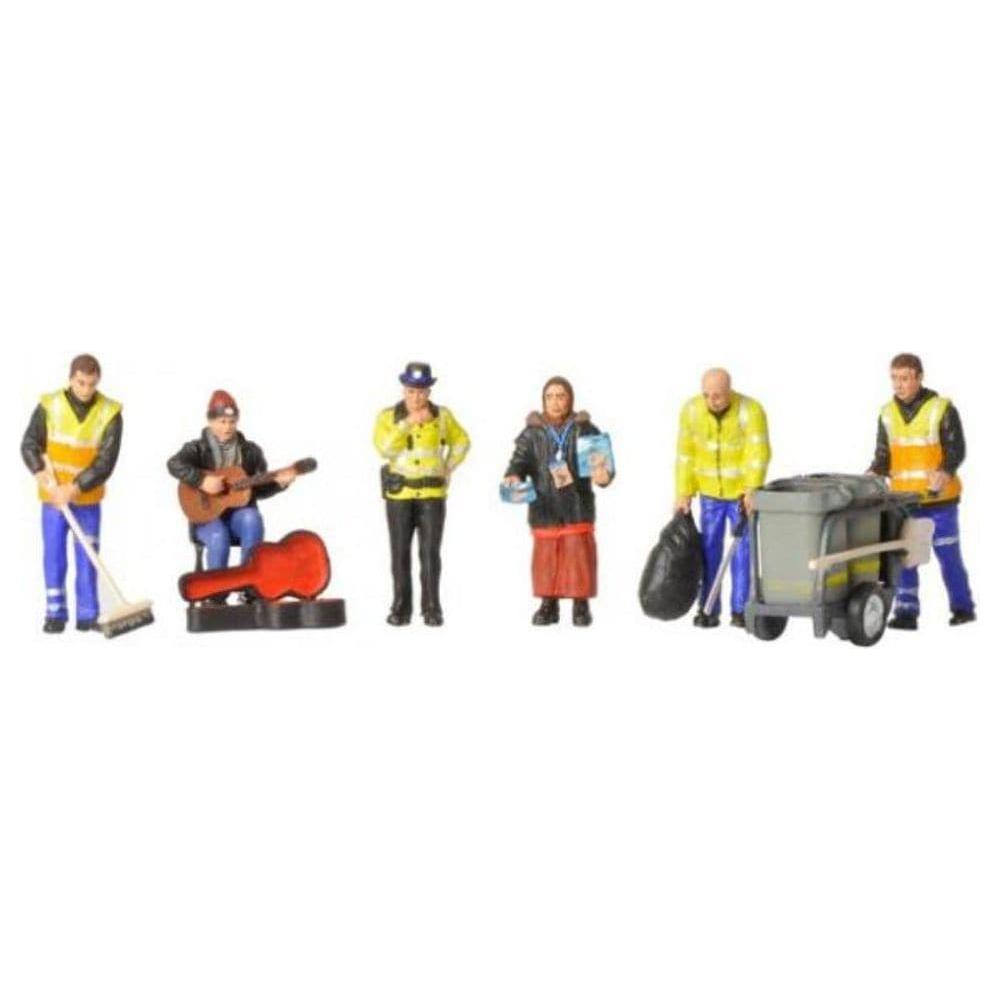
SCENECRAFT OO Modern Street Scene Figures
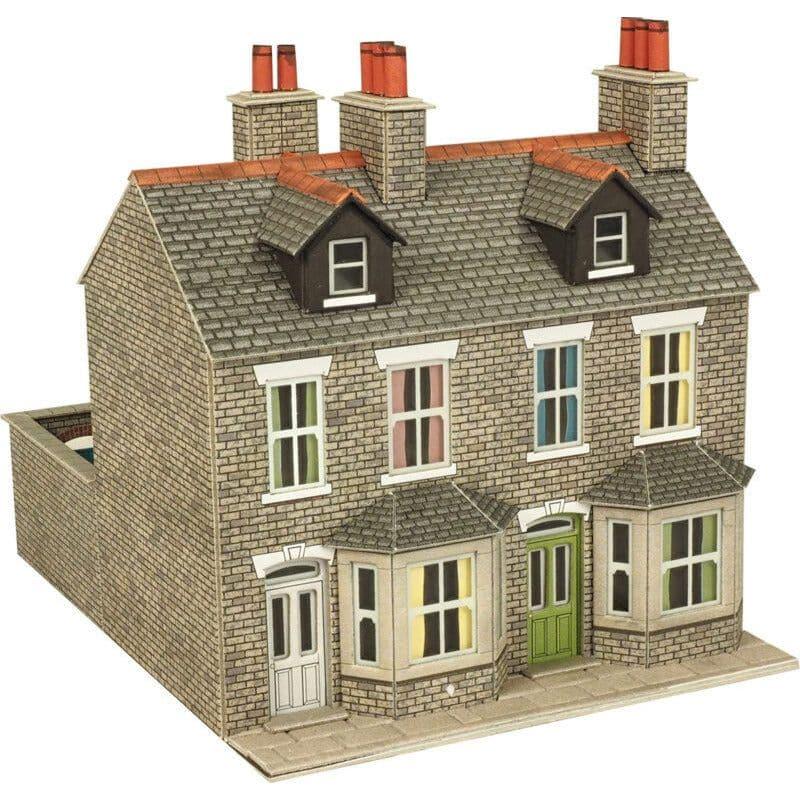
METCALFE OO/HO Stone Terraced Houses
Consider the following elements when creating scenery for different eras:
- Buildings and Structures: Use era-appropriate architecture, from Victorian-era stations to modern glass and steel structures.
- Vegetation: Reflect changes in landscape over time, from wild countryside to manicured urban parks.
- Vehicles: Include cars, trucks, and other vehicles that match the period of each section.
- Signage and Advertisements: These small details can effectively set the tone for different eras.
- Industrial Elements: Show the evolution of industry, from coal mines and factories to modern business parks.
The Metcalfe range offers a variety of detailed kits that can be customized to suit different eras, adding authenticity to your layout. Remember to weather your buildings and scenery appropriately to reflect the age and condition typical of each era.
Operational Considerations for Multi-Era Layouts
Operating a multi-era layout presents unique challenges and opportunities. To ensure smooth running and an engaging experience, consider the following operational aspects:
- Control Systems: Implement a DCC (Digital Command Control) system to operate multiple locomotives independently, regardless of their era.
- Timetabling: Create historically accurate timetables for each era, allowing for interesting operational sessions that span different periods.
- Switchyards and Depots: Include facilities that can service locomotives and rolling stock from various eras.
- Lighting: Consider using era-specific lighting effects, such as gas lamps for older sections and LED lighting for modern areas.
By carefully planning your operational scheme, you can create engaging running sessions that highlight the unique characteristics of each era represented on your layout.
Expanding and Enhancing Your Multi-Era Layout
As you become more comfortable with your multi-era layout, consider these ideas for expansion and enhancement:
- Sound Effects: Incorporate era-specific sound modules to add another layer of realism to your layout.
- Animated Scenes: Use motorized accessories to create dynamic scenes, such as working cranes or moving vehicles.
- Lighting Effects: Implement a day-night lighting cycle to showcase your layout in different atmospheres.
- Interactive Elements: Add push-button operated features that allow viewers to engage with different aspects of your layout.
- Detailed Interiors: For key buildings, consider adding interior details visible through windows, enhancing the sense of life and activity in your scenes.
Remember: The key to a successful multi-era layout lies in the seamless integration of different time periods. Pay close attention to the transitions between eras, using scenery and architectural elements to guide the viewer through the evolution of rail transport.
Final Tips for Success
- Research extensively to ensure historical accuracy in your depictions of different eras.
- Consider creating themed operating sessions that focus on specific time periods.
- Regularly maintain your layout to keep it in top condition, regardless of the era being represented.
- Join model railway clubs or online communities to share ideas and get inspiration for your multi-era project.
- Document your progress through photos or videos, creating a record of your layout's evolution.
Conclusion
With the right tools, products, and a passion for model railways, you can create a layout that not only looks stunning but also tells the story of the evolution of rail transport through the ages. Your multi-era layout will serve as a testament to your creativity and dedication to the hobby, offering endless opportunities for expansion and refinement.
As you continue to develop and enhance your layout, remember that the journey is just as rewarding as the destination. Each new addition, whether it's a vintage steam engine or a modern electric locomotive, adds another layer to the rich tapestry of railway history you're creating.
Bringing Your Multi-Era Layout to Life
Building a multi-era model railway layout is an ambitious and rewarding project that allows you to showcase the evolution of rail transport in a captivating and educational way. By combining careful planning, attention to detail, and a passion for railway history, you can create a layout that not only impresses visually but also tells a compelling story of technological progress and cultural change.
Happy modeling, and may your multi-era layout be a source of pride and enjoyment for years to come!
 is here! Shop now, pay later in 4 easy installments
is here! Shop now, pay later in 4 easy installments

